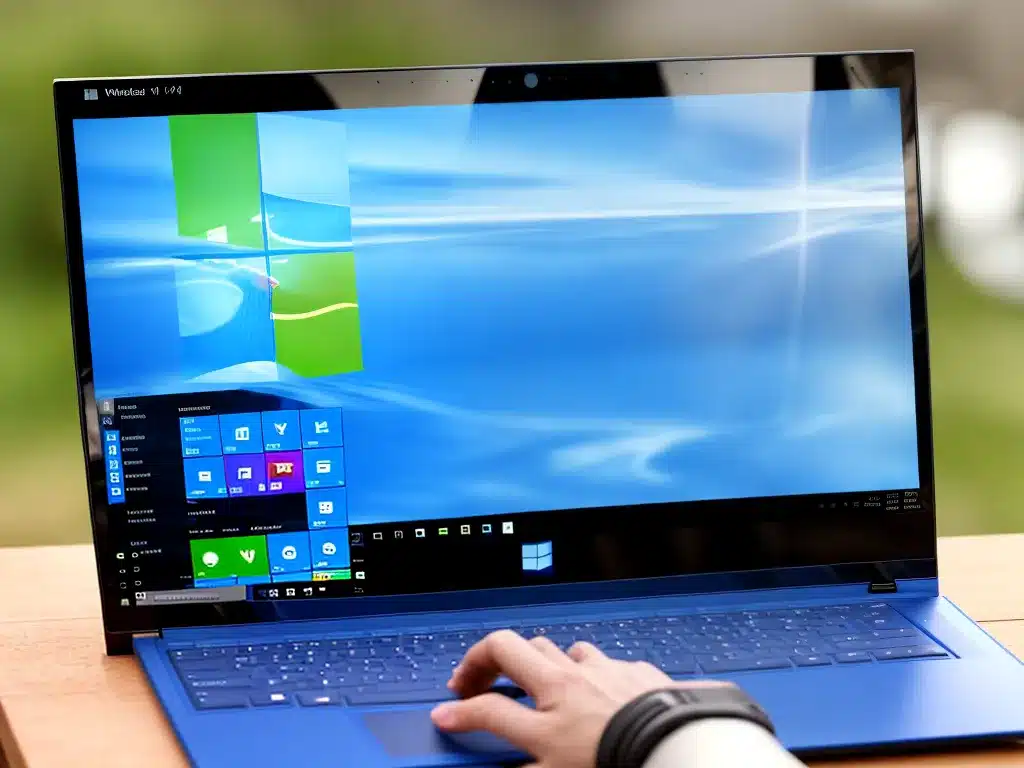
Introduction
Windows 11 is the latest version of Microsoft’s operating system, representing the biggest update to Windows in years. As someone who has been using Windows for over a decade, I’m excited to share my thoughts on the key changes and new features that make Windows 11 the most significant update yet.
New Visual Design
The most obvious change in Windows 11 is the visual redesign. Microsoft simplified the interface with rounded corners, pastel colors, and a clean layout.
Some key design changes include:
- Centered taskbar – The taskbar icons and Start menu are now centered on the screen, giving a more modern and symmetrical appearance.
- Rounded corners – App windows, context menus, and other elements now have rounded corners for a softer look.
- New Start menu – The Start menu is now a simple list of pinned apps and recommendations. Live tiles are gone.
- Updated sounds – Interface sounds like window opening/closing have been updated to be softer and more modern.
Overall, the changes give Windows a more refined and Mac-like aesthetic. While basic in concept, the little visual tweaks go a long way in making Windows 11 feel fresh.
New Widgets
One of the biggest new features in Windows 11 is widgets. Accessible by swiping from the left side of the screen or clicking the Widgets icon, these are small glanceable information panels for news, weather, sports, and more.
Widgets allow me to quickly check information like:
- Local weather forecast
- Top news headlines
- Calendar appointments
- Stock prices
- Sports scores
Microsoft integrates widgets directly into the OS, making them easy to access. While simple, I’ve found myself checking widgets multiple times per day for quick info.
Better Multitasking
Windows 11 introduces Snap Layouts, which are preset window arrangements to snap apps side-by-side for better multitasking. I can now quickly snap windows in layouts like two side-by-side apps or three apps stacked vertically.
There are also new Snap Groups that allow me to save and recall custom window layouts at any time. I’ve been using this frequently to snap my messaging, browser, and music apps together in one view.
These changes streamline my workflow and make managing multiple apps feel more efficient. The days of haphazardly resizing and moving windows feel gone.
Improved Gaming
Gaming gets a boost in Windows 11 with two key additions:
-
Auto HDR – This automatically adds high dynamic range (HDR) to games for enhanced contrast and colors, even if the game doesn’t natively support HDR. It makes games look fantastic without doing anything.
-
DirectStorage – This new API allows games to load assets directly from storage into the graphics card memory, reducing load times. As more games adopt DirectStorage, gaming performance should substantially improve.
As someone who games on PC regularly, these upgrades are welcome. Auto HDR in particular immediately improved the visuals of my games.
Android App Support
One of the most unexpected additions to Windows 11 is support for Android apps via the Amazon Appstore. While still in preview, this will allow me to run Android apps and games directly on my PC.
After sideloading the Amazon Appstore, I was able to install apps like Kindle, Audible, Subway Surfers, and more. It’s not perfect yet, but being able to access Android apps on a PC holds huge potential.
Microsoft is smartly trying to bridge the app gap between mobile and PC here. I look forward to native Android app support improving over time.
Verdict: A Big Step Forward
While iterative on the core Windows formula, the visual overhaul, widget system, multitasking tools, gaming upgrades, and Android app support make Windows 11 feel like a substantial update.
As both a productivity and gaming user, nearly all the new features resonate with how I personally use my PC. The OS feels more refined, enjoyable to use, and tailored towards how I multitask today.
While adoption was initially slow, Windows 11 is picking up steam as more understand the benefits. For any Windows user, it’s an easy recommendation and the biggest update to Windows in years. I fully embraced the upgrade on my own PCs.












